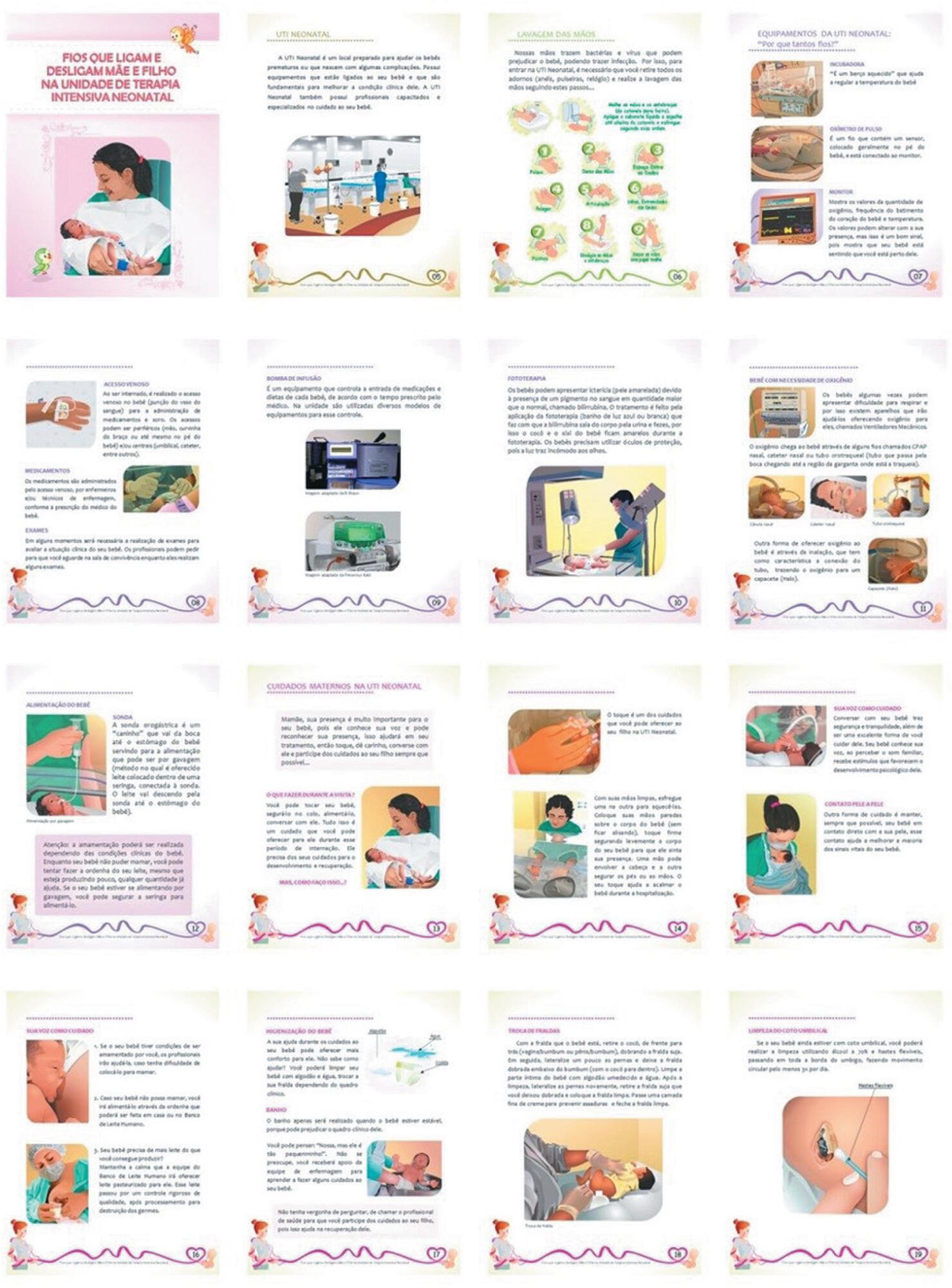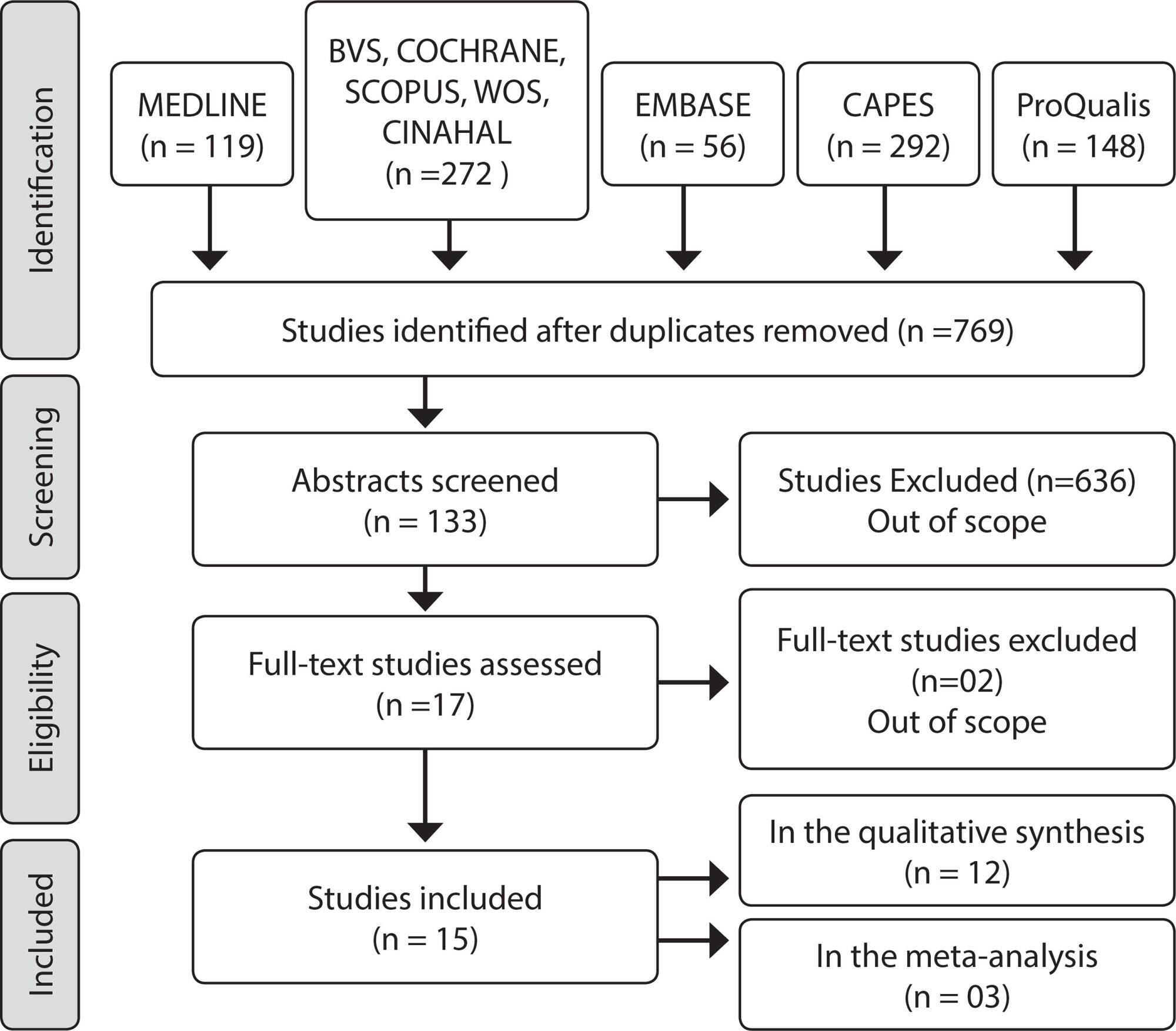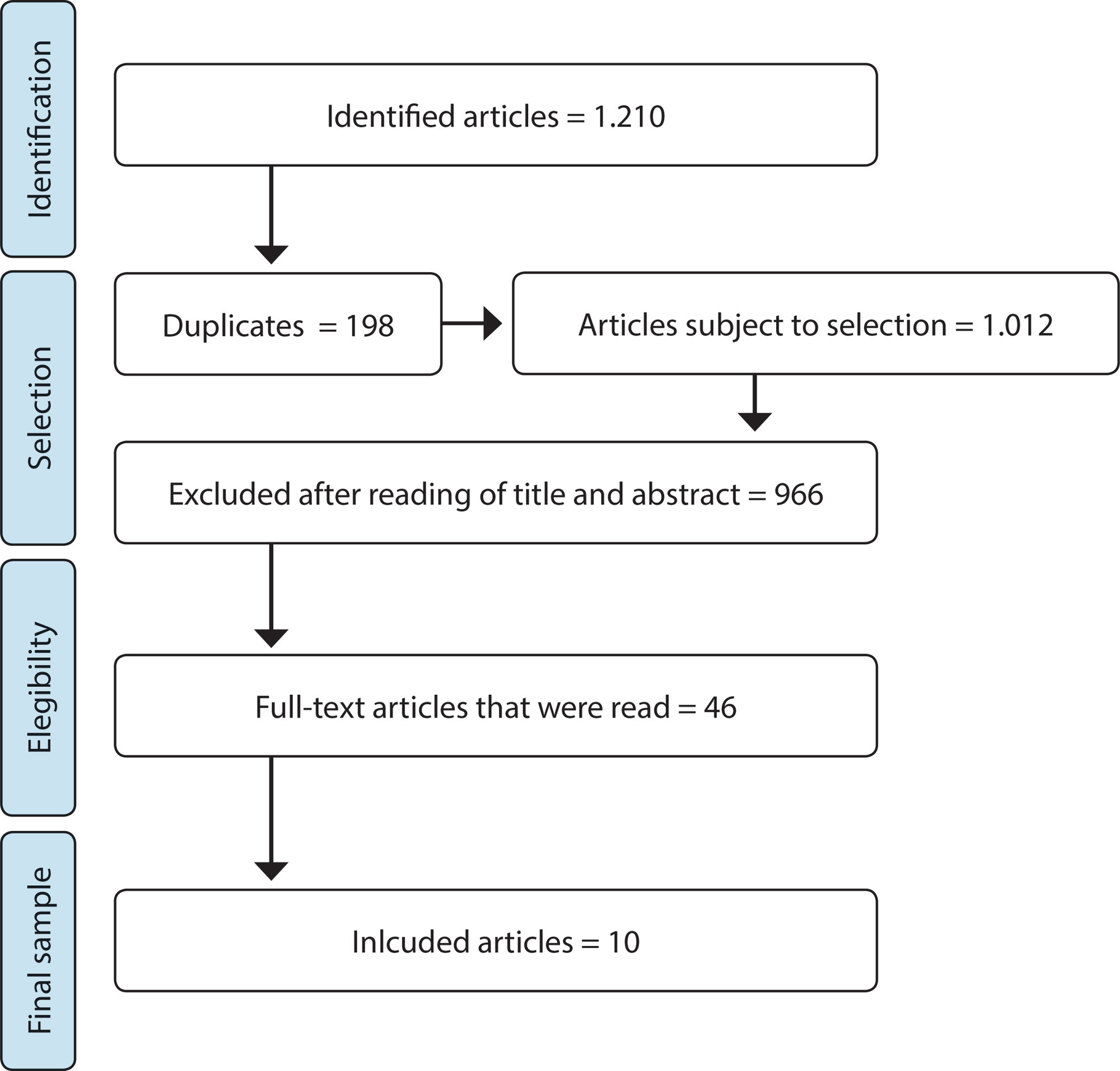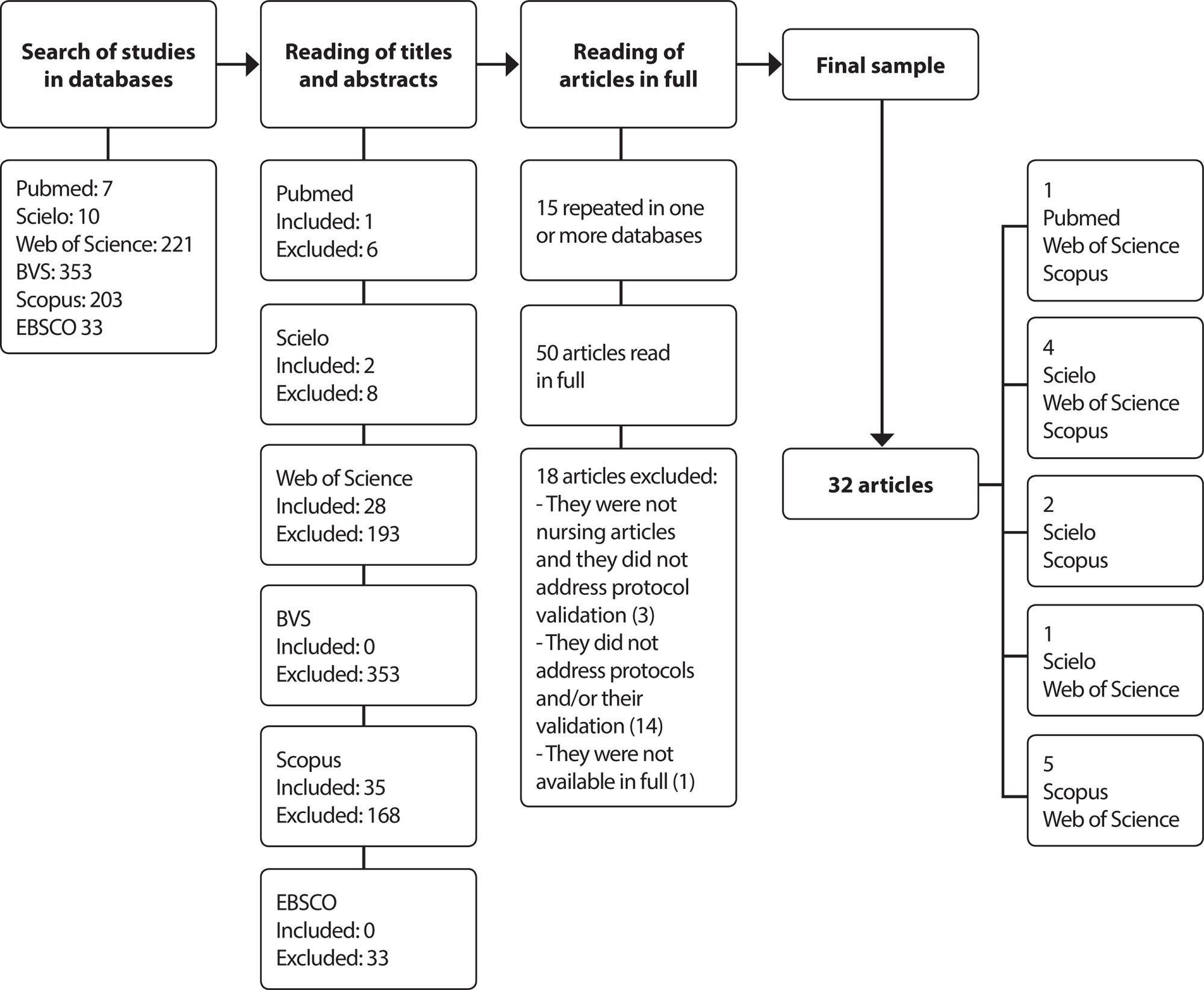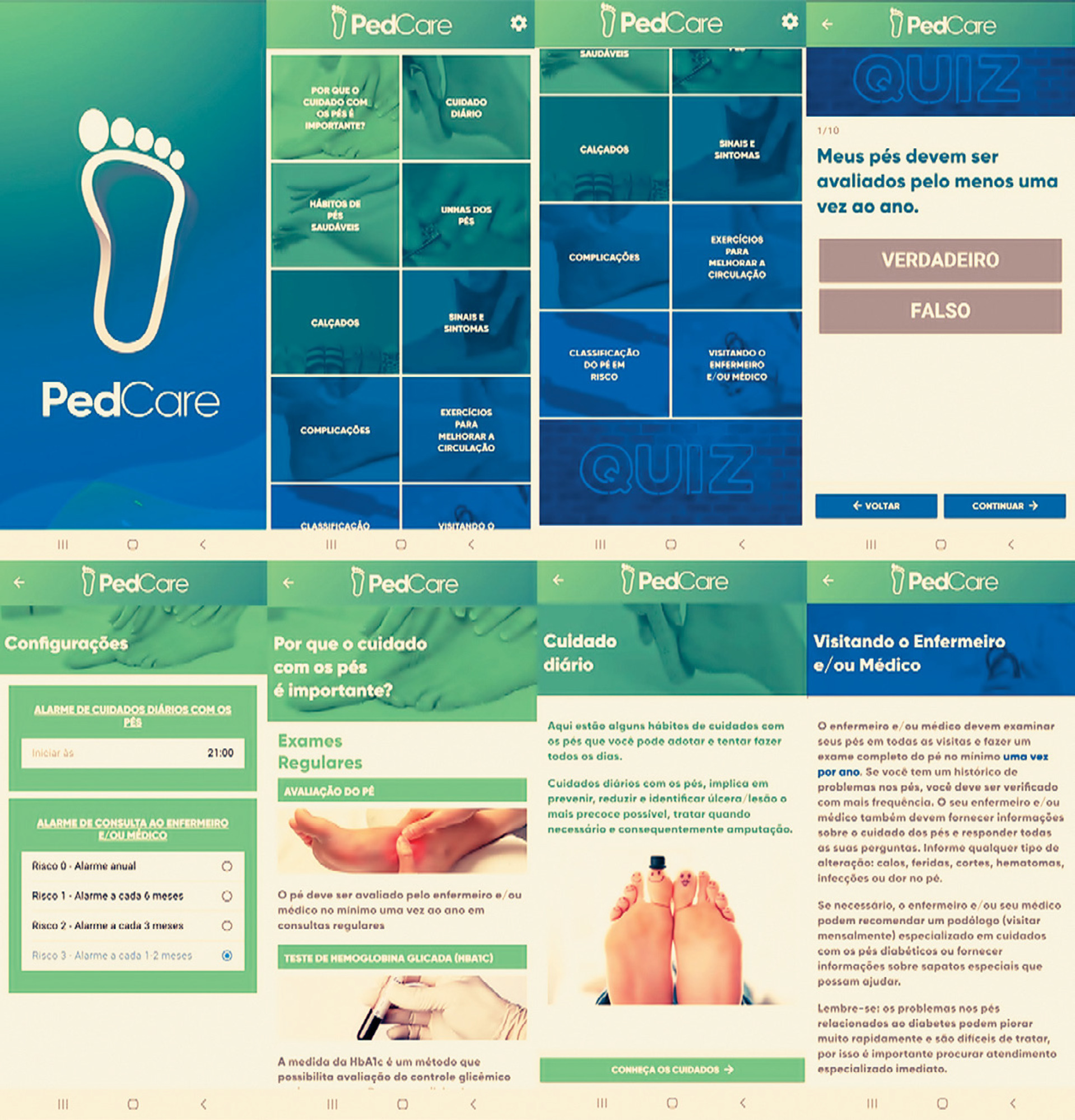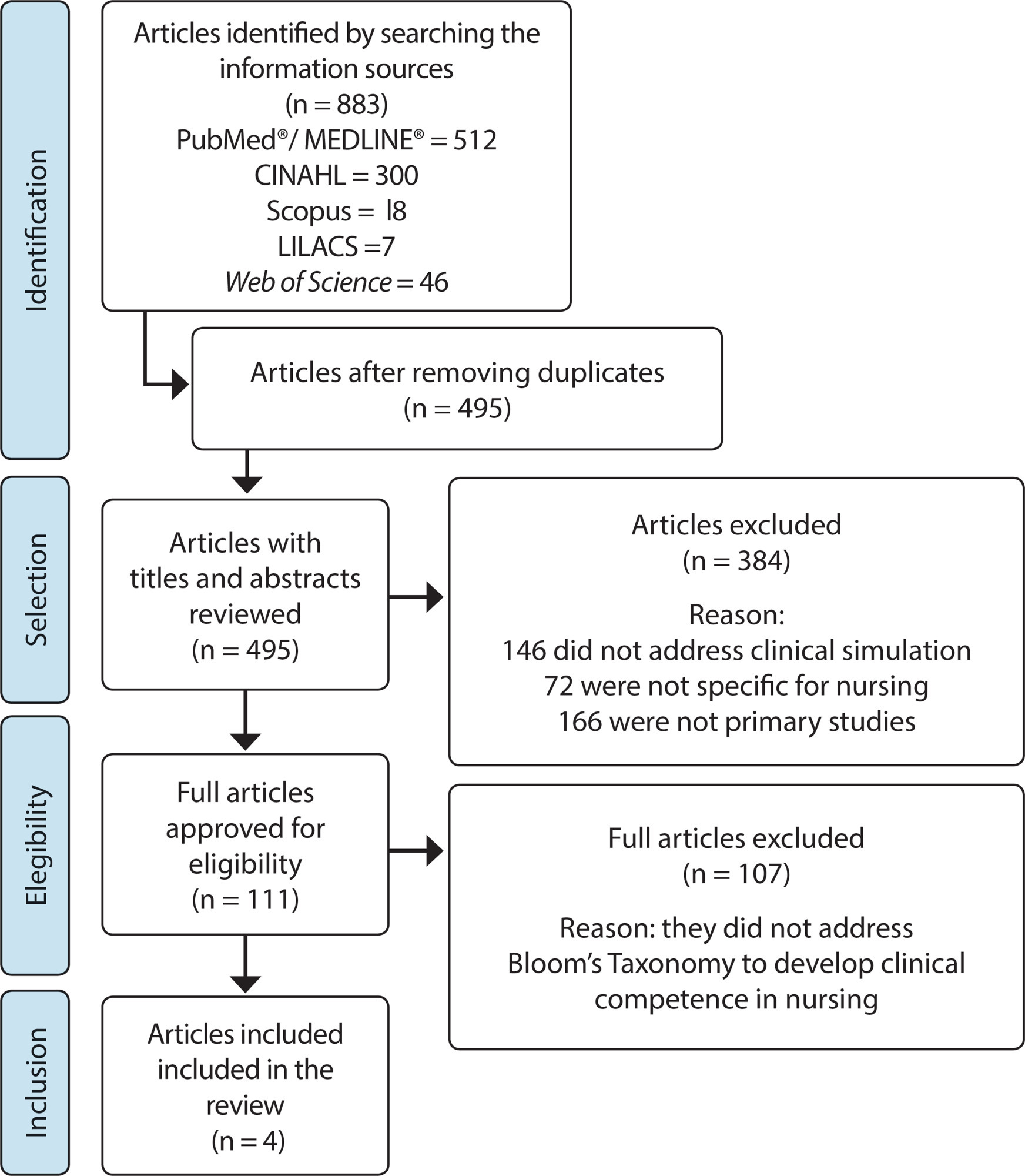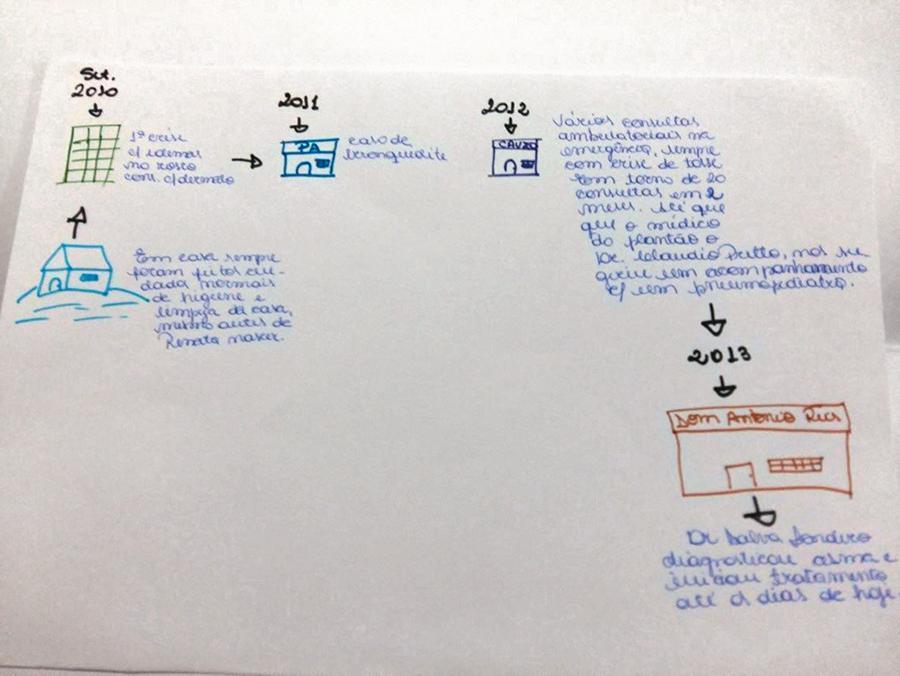-
REVIEW06-26-2023
Nursing care directed to burned patients: a scoping review
Revista Brasileira de Enfermagem. 2023;76(3):e20220205
Abstract
REVIEWNursing care directed to burned patients: a scoping review
Revista Brasileira de Enfermagem. 2023;76(3):e20220205
DOI 10.1590/0034-7167-2022-0205
Views0See moreABSTRACT
Objectives:
to identify in the literature and summarize nursing care in a hospital environment directed to patients who suffered burns.
Methods:
a scoping review, according to the JBI Reviewers’ Manual recommendations, with a search in the MEDLINE, CINAHL, Web of Science, Scopus databases and in the Virtual Health Library portal, through articles published between 2016 and December 2021.
Results:
of the total 419 articles found, nine were selected for analysis. The main care measures identified were changing dressings and types of coverage, vital sign control, non-pharmacological techniques for pain relief and opioid reduction.
Conclusions:
the complexity of burn care requires constant updating by the nursing team. Keeping it prepared to carry out the best nursing care practices for burn patients will promote adequate care, patient recovery and reduction of possible harm.

-
06-26-2023Revista Brasileira de Enfermagem. 2023;76(3):e2023760301c
Abstract
Revista Brasileira de Enfermagem. 2023;76(3):e2023760301c
-
ORIGINAL ARTICLE06-26-2023
Searching for human connection to transcend symbolisms in pediatric palliative care
Revista Brasileira de Enfermagem. 2023;76(3):e20220476
Abstract
ORIGINAL ARTICLESearching for human connection to transcend symbolisms in pediatric palliative care
Revista Brasileira de Enfermagem. 2023;76(3):e20220476
DOI 10.1590/0034-7167-2022-0476
Views0See moreABSTRACT
Objectives:
to present a theoretical model for the interactional context of health professionals and families of children and adolescents under palliative care.
Methods:
qualitative study based on the theoretical frameworks of Grounded Theory and Symbolic Interactionism. Ten palliative care professionals took part in this study through semi-structured interviews employing snowball technique from 2020 to 2021.
Results:
the comparative data analysis resulted in the theoretical model “Searching for human connection to transcend symbolisms in pediatric palliative care”. It reveals symbolic elements that substantiate the construction of a collaborative context integrating two phenomena: “Overcoming boundaries and intertwining paths” and “Embracing suffering to weave meaningful experiences”. Symbolisms in palliative care guide the behavior of families and professionals, which makes them the key factor to be managed.
Final Considerations:
symbolisms and suffering continually integrate the interactional experience of professionals. Empathy and compassion are fundamental elements to enable their connection with families.
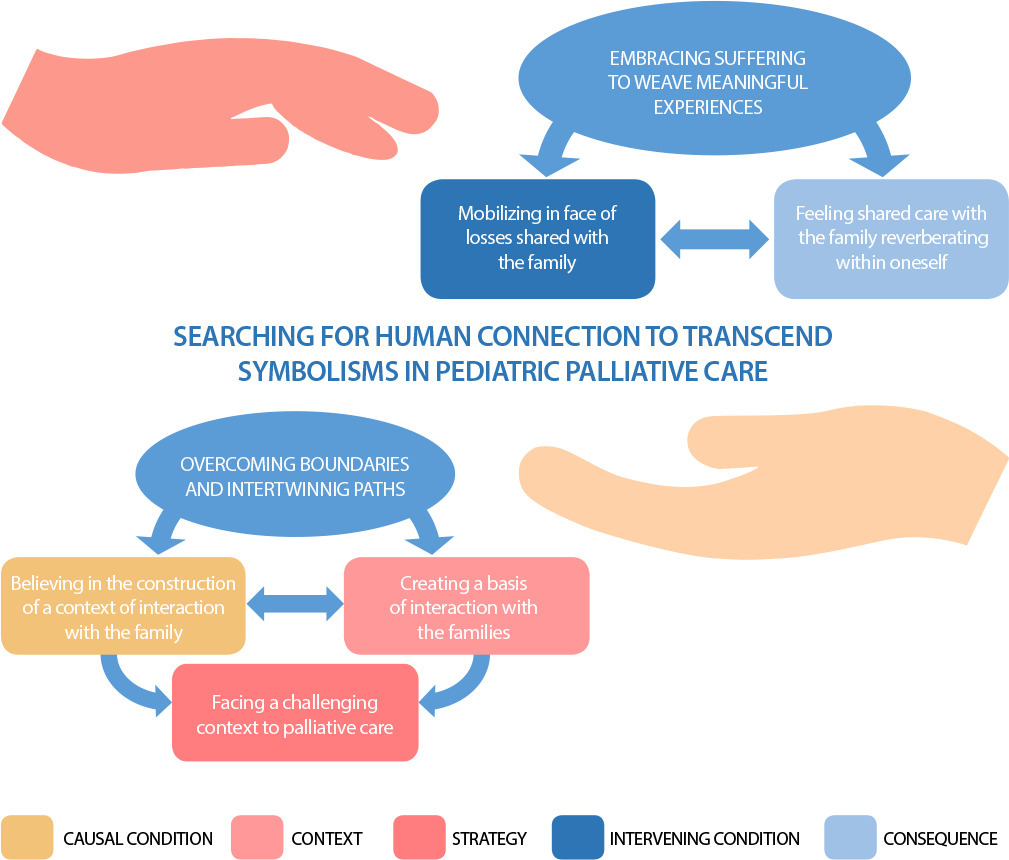
-
LETTER TO THE EDITOR06-26-2023
Striving for vessel health preservation through standardized assessment: a Letter to the Editor
Revista Brasileira de Enfermagem. 2023;76(3):e2023760301c
Abstract
LETTER TO THE EDITORStriving for vessel health preservation through standardized assessment: a Letter to the Editor
Revista Brasileira de Enfermagem. 2023;76(3):e2023760301c
DOI 10.1590/0034-7167.2023760301c
Views0Dear Dr Dulce Aparecida BarbosaEditor in Chief of the Revista Brasileira de Enfermagem[…]See more -
REVIEW06-26-2023
Barriers to Pre-Exposure Prophylaxis (PrEP) use for HIV: an integrative review
Revista Brasileira de Enfermagem. 2023;76(3):e20210963
Abstract
REVIEWBarriers to Pre-Exposure Prophylaxis (PrEP) use for HIV: an integrative review
Revista Brasileira de Enfermagem. 2023;76(3):e20210963
DOI 10.1590/0034-7167-2021-0963
Views0See moreABSTRACT
Objectives:
to identify and synthesize scientific evidence on the barriers and difficulties for Pre-exposure Prophylaxis (PrEP) use and compliance for HIV.
Methods:
an integrative literature review, using the MEDLINE/PubMed, Cumulative Index to Nursing and Allied Health Literature (CINAHL), Academic Search Premier and Scopus (Elsevier) databases.
Results:
all (100%) the articles included identified that PrEP users experience some type of structural barrier related to health services such as long distance from the units, suboptimal logistics for taking pills and professional resistance to prescribing PrEP. Furthermore, 63.21% identified social barriers, such as stigma about sexuality and HIV, in addition to individual barriers such as alcohol use, adverse effects, and concerns about long-term toxicity.
Conclusions:
the barriers to PrEP use are multifactorial. Effective interventions are needed to support PrEP users in accessing, complying with, and retaining health services.
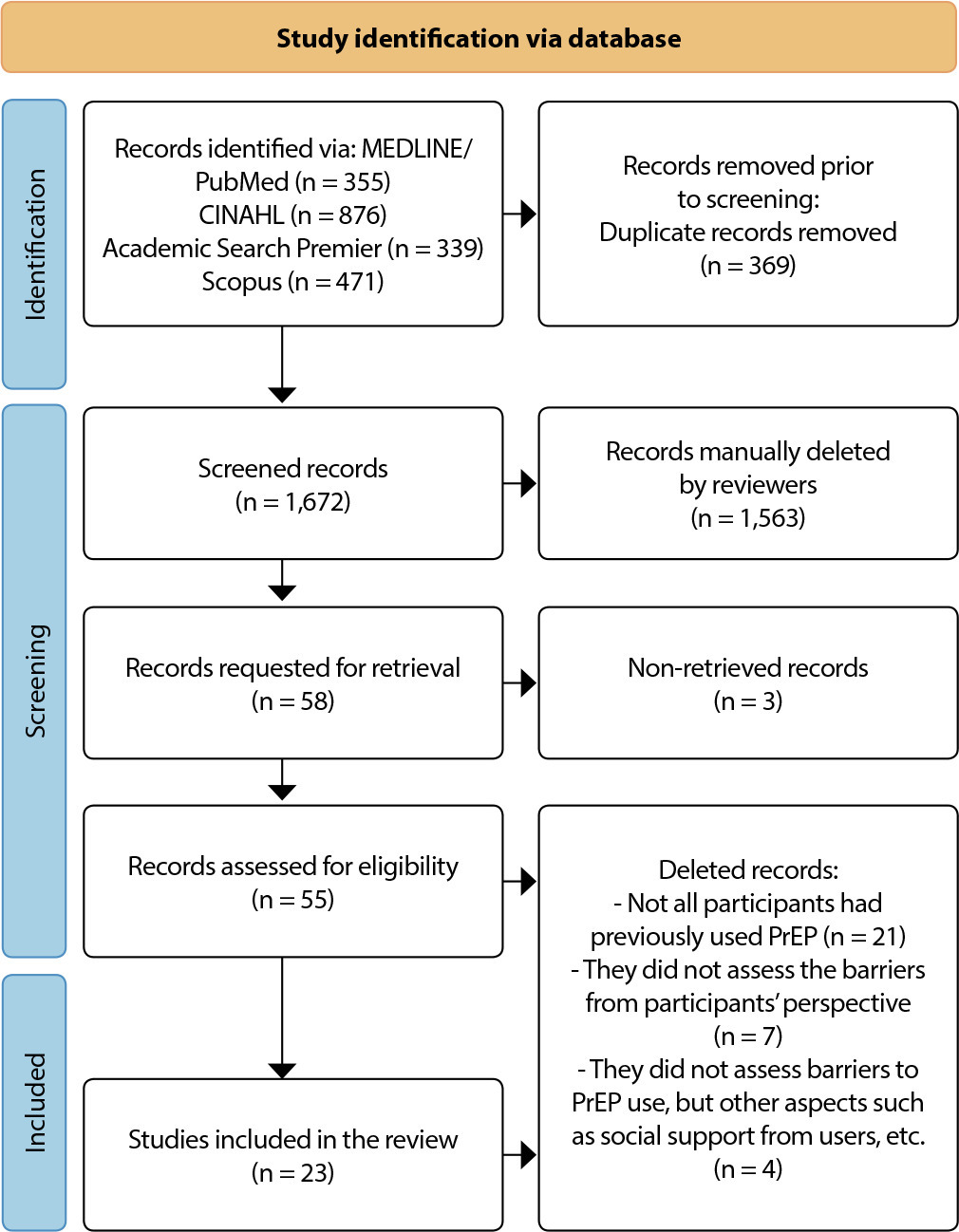
-
ORIGINAL ARTICLE06-26-2023
Effect of video on satisfaction and self-confidence in simulation training: a randomized clinical trial
Revista Brasileira de Enfermagem. 2023;76(3):e20220366
Abstract
ORIGINAL ARTICLEEffect of video on satisfaction and self-confidence in simulation training: a randomized clinical trial
Revista Brasileira de Enfermagem. 2023;76(3):e20220366
DOI 10.1590/0034-7167-2022-0366
Views0See moreABSTRACT
Objectives:
to identify the effect on satisfaction and self-confidence of undergraduate nursing students after using a validated bed bath video during the simulation.
Methods:
blinded parallel randomized clinical trial. Participants were allocated to the control group (simulation with tutor) or intervention (simulation with video). After the interventions, the Student Satisfaction and Self Confidence with Learning Scale was used to assess satisfaction and self-confidence. The study was approved by the Ethics Committee and Brazilian Registry of Clinical Trials. Mann Whitney, Fisher Exact and Student t statistical tests were used. A significance level of 5% was adopted. Results: fifty eight students (30, control; and 28, intervention) were evaluated. There was no significant difference between the groups regarding satisfaction (p=0.832) and self-confidence (p>0.999).
Conclusions:
satisfaction and self-confidence were similar between the groups, and the two strategies could be used in the simulated practice of bed bathing.

-
05-29-2023
Absenteeism in child health services: a systematic review
Revista Brasileira de Enfermagem. 2023;76:e20210805
Abstract
Absenteeism in child health services: a systematic review
Revista Brasileira de Enfermagem. 2023;76:e20210805
DOI 10.1590/0034-7167-2021-0805
Views0See moreABSTRACT
Objectives:
to analyze data from qualitative studies related to the phenomenon of health follow-up dropout of newborns, infants and preschoolers in child health services.
Methods:
systematic review, carried out in 19 information bases. Studies were included that portray the reasons for dropping out health follow-up of children up to five years old. The JBI methodology was used for systematic reviews of qualitative evidence.
Results:
we identified 20,199 studies. After applying the eligibility criteria, 81 were selected. Seven were excluded due to duplicity, resulting in 74 articles that were read in full. After this phase, three articles were selected for the final sample and later after reading their references, one more was included, totaling four articles for critical analysis.
Conclusions:
the synthesized findings highlight that health follow-up dropout is based on personal knowledge and beliefs, the family routine dynamics and access to services.
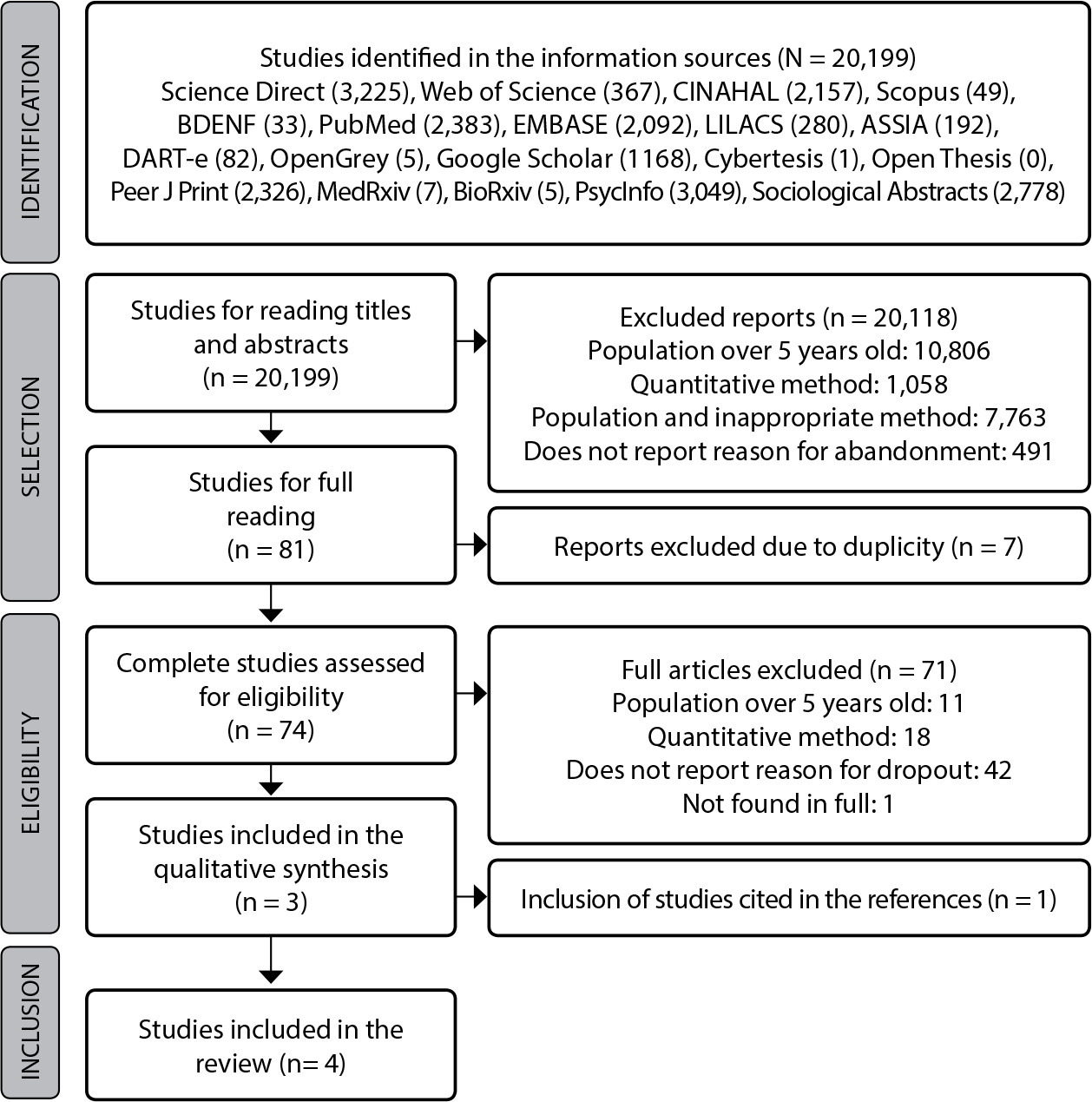
-
ORIGINAL ARTICLE05-29-2023
Quality of life from women’s perspective in the exercise of sex work: a study of social representations
Revista Brasileira de Enfermagem. 2023;76:e20220169
Abstract
ORIGINAL ARTICLEQuality of life from women’s perspective in the exercise of sex work: a study of social representations
Revista Brasileira de Enfermagem. 2023;76:e20220169
DOI 10.1590/0034-7167-2022-0169
Views1See moreABSTRACT
Objectives:
to analyze the social representations elaborated by sex workers from Alto Sertão Produtivo Baiano about quality of life.
Methods:
a qualitative study, based on the Social Representation Theory, carried out in the region of Alto Sertão Produtivo Baiano, with 30 sex workers. Individual in-depth interview was carried out, with speeches organized in a corpus and treated in IRAMUTEQ, enabling lexical analysis for Descending Hierarchical Classification.
Results:
four thematic classes emerged, in which social representations of quality of life pervade: money earned to supply needs; association with healthy living and obtaining health (physical and mental); balance of emotions (although there are some negative sensations such as fear and anxiety); and faith in a deity.
Final Considerations:
the social representations elaborated by sex workers about quality of life are anchored in concepts, subjective and practical, punctuated by the World Health Organization.
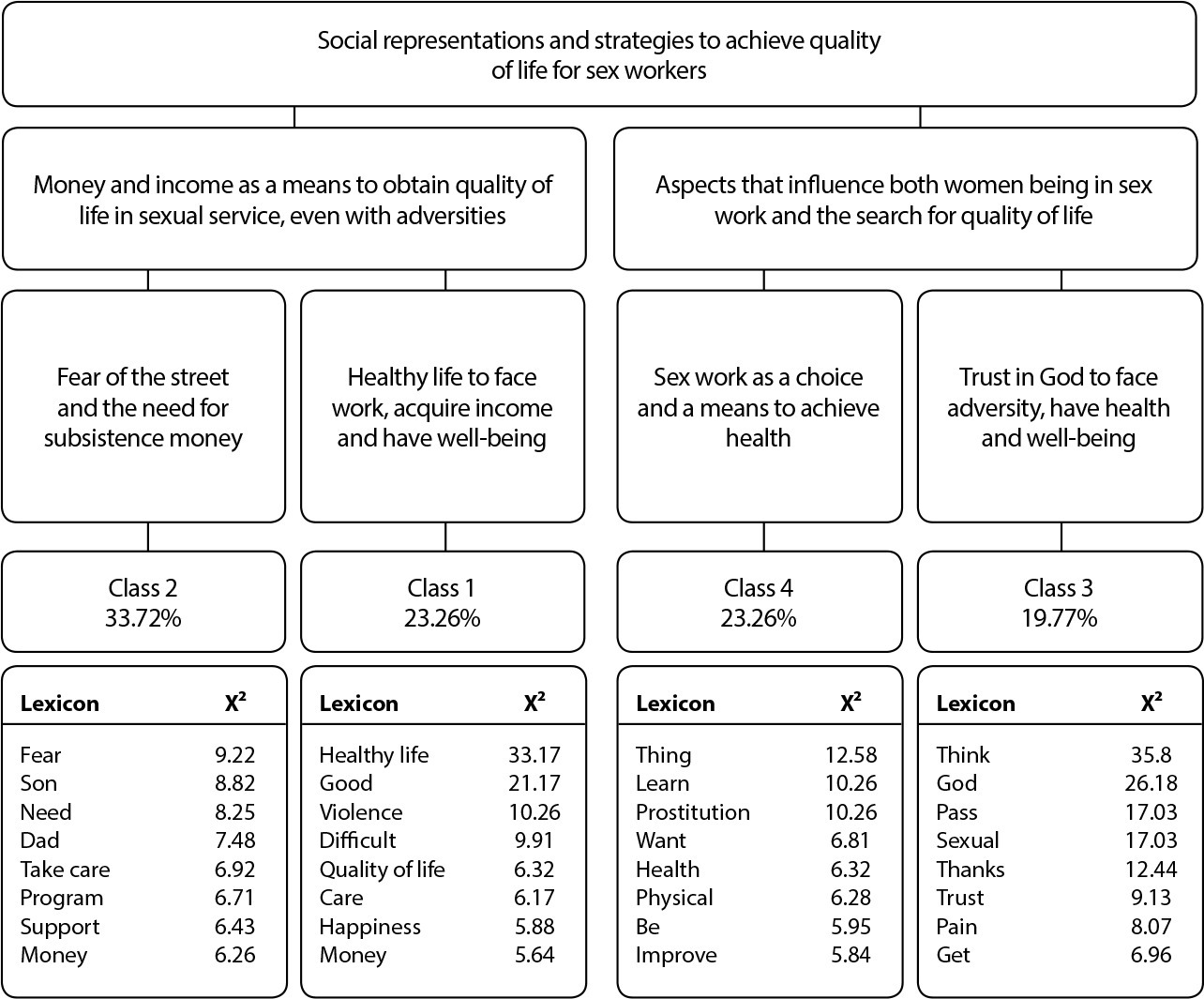
Search
Search in:
Nuvem de Tags
Enfermagem (930)Cuidados de Enfermagem (269)Atenção Primária à Saúde (239)Idoso (208)Educação em Enfermagem (151)Segurança do Paciente (150)Saúde Mental (145)Educação em Saúde (139)Estudos de Validação (131)Qualidade de Vida (104)Tecnologia Educacional (100)Promoção da Saúde (99)COVID-19 (91)Criança (91)Família (87)Enfermagem Pediátrica (86)Saúde do Trabalhador (86)Adolescente (85)Saúde Pública (82)Estudantes de Enfermagem (77)





